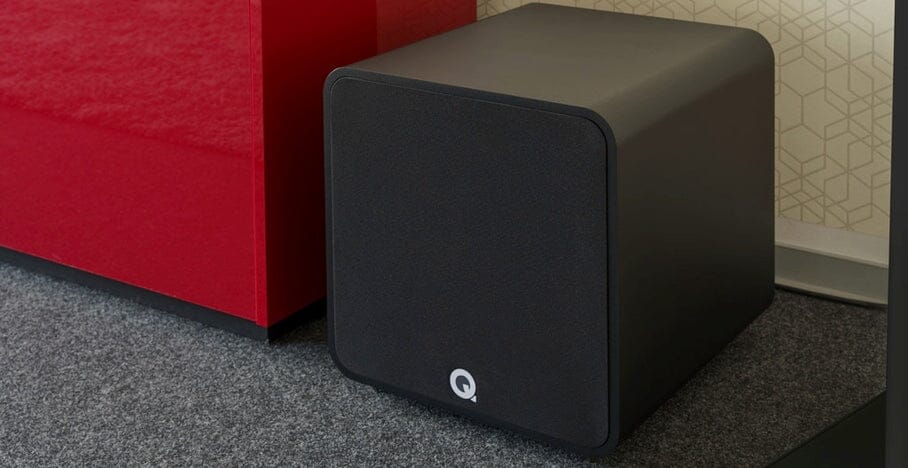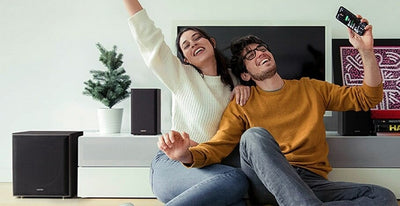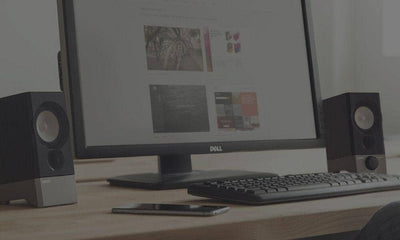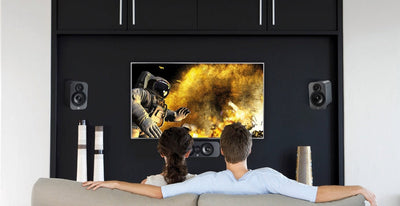Adding a subwoofer to your speaker system or home cinema can be game changing in terms of sound quality.
Whether you want to rave in the kitchen or to add tension and drama to your music and movies, a subwoofer is the answer!
If you’re building a home cinema system then you’ll 100% want to budget for a subwoofer, but if you’re just enjoying music then a subwoofer can still bring amazing value and sound enhancements that you just won’t get with speakers alone.
Choosing whether to add a subwoofer and then figuring out which one you need can be a daunting task, but no need to worry, our subwoofer guide will give you all the information you need and our team is on hand to help.
What Is A Subwoofer & What Does It Do?
A subwoofer is a stand alone speaker responsible for the low-frequencies.
They fill in the bottom-end of your music with deep bass, depth and realism and transform your speaker system into a power house.
They are usually a standalone box with a built-in amplifier for optimum power and plug & play ease.
Subwoofers are large, the cones are usually 8”, 10” or 12” and they’re big for a reason! The larger the speaker the better the frequency response.
If you’re running smaller speakers then a subwoofer is a must as it can fill in all the missing frequencies lost by the small speakers, think of your car, small speakers but you almost certainly have a subwoofer or two lurking behind the dash to keep that sound quality up.
Subwoofers are also ideal for use with in ceiling speakers which can often be a bit lacking in bass.
Types Of Subwoofer
Active: These are the most common subwoofers. Active subwoofers are an all-in-one unit that has a built-in amplifier, crossover and woofers.
You simply plug it in, connect to your amplifier and benefit from the bass!
You’ll find active subwoofers from sizes 8” upwards in various different finishes including black, white, walnut and more. We offer subwoofers from Edifier, NEXT, Monitor Audio & Q Acoustics.
Passive: Passive subwoofers are installed either in the ceiling or in the walls and are powered by an external amplifier.
This is much more discreet but takes a bit more cabling and typically costs a bit more.
These subwoofers aren’t quite so common so there’s less choices on the market. We offer in ceiling passive subwoofers from Q Acoustics (QISUB80SP) and in wall subwoofers from Monitor Audio (IWS-10).
Connecting A Subwoofer
Your subwoofer will need to be connected into your amplifier via cable, there is a preferred way to do this, but for amplifiers without a pre/subwoofer output it is still possible using option 2 below.
Option 1 - RCA Subwoofer Cable: You will typically connect most subwoofers to your amplifiers pre out, or dedicated subwoofer output using a subwoofer cable.
This is a simple plug & play operation, the subwoofer will need to be plugged into the mains via a socket then a cable between the subwoofer and your amplifier and you are up and running.
Option 2 - High Level: If you don’t have a subwoofer output then there is a way around it by using a compatible subwoofer with high level inputs (speaker level) such as the NEXT S10 you can wire your amplifier into the subwoofer using standard speaker cable, then wire your speakers from the subwoofer.
This is a surprisingly good system and works very well when you don’t have a pre out on your amplifier. We’ve tried and tested this with all of our in ceiling speaker amplifiers which typically don’t have an audio output such as the Systemline E50.
If you are going for a passive ceiling or in wall subwoofer then this process is a little bit different.
You’ll need a subwoofer amplifier which plugs into your amplifier’s pre-out or subwoofer output, then you wire from the subwoofer amplifier to the passive subwoofer using high quality 2 core speaker cable.
Most subwoofer amplifiers, such as the Monitor Audio IWA-250 can handle up to two subwoofers and has onboard phase, frequency and volume controls.

Source: Klipsch
Subwoofer Placement
First things first, a subwoofer anywhere in the room will sound better than no subwoofer!
In our experience within our market you can’t go too far wrong with placing a subwoofer at home for movies and music, but there are a few tips to get the optimal placement.
First thing to consider is the cables, you’ll need to plug this into your amplifier or AV receiver via a subwoofer cable so consider where the amplifier is in your room and ideally keep the subwoofer in the “listening area”.
Subwoofers are ideally situated in the corner of a room which can increase its output making it sound louder.
If your subwoofer is ported (you’ll see a large hole into the cabinet) then you’ll want to keep this 6-12” away from the wall to allow airflow from the port.
The best advice is to keep the subwoofer to the corner of the room near the listening area, or by your front speakers.
Don’t forget that you can also plug the subwoofer in, put on a bass heavy song and try a few different positions to see how your room layout affects the dynamics.
Conclusion
Now you should understand the different types of subwoofer and how to connect them up to your amplifier / speaker system.
Whether you want a subwoofer or not really comes down to personal choice, remember that subwoofers have a volume control so your home doesn't need to resemble an ASDA car park on a Friday night!
A subwoofer adds depth and volume to your music without being overwhelming. Whatever you listen to, be it classical or RnB, a subwoofer can enhance your music experience.
For the ultimate speaker system, you’ll want to add a quality subwoofer.
Personally, I love bass, the depth and realism it adds to my music so I will almost always recommend a subwoofer if the budget allows.
If you would like further subwoofer advice please feel free to contact our audio experts by email, live chat or calling 02393 190955.





